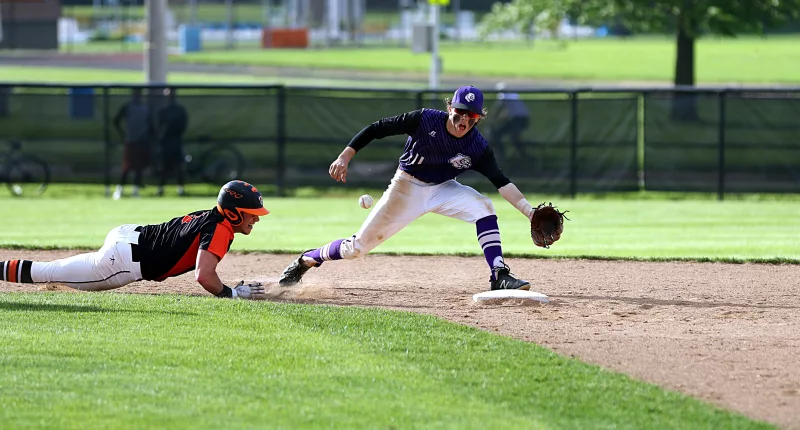Sports technology is big business in 2023, and it’s set to grow even bigger. By 2030, for example, the global market value is set to reach $55.14 billion. From wearable devices that measure accuracy and skill, to injury prevention tools that help prevent physical trauma, sports tech advancements are starting to push the boundaries of science, leading us to greater optimization and stronger performance.
It’s not just sports players and athletes that are benefiting from sports technology, however. The planning and the organization of sporting events have become simpler thanks to event scheduling technology. Tools like Diamond Scheduler streamline the process for leagues, teams, and divisions, reducing the chances of conflicts and ensuring organized seasons for coaches, players, and, of course, the fans.
Digital tools have brought about a shift in fan engagement by making sports more accessible and immersive for spectators. Sports organizations leverage these tools by implementing loyalty programs offering high-tech rewards, establishing community forums for interaction among fans, facilitating fantasy league participation as well as supporting fan clubs. These initiatives contribute to fostering a more connected fan base. Some examples include the Sacramento Kings’ Royalty Pass and the Boston Red Sox Rewards scheme.
Machine learning algorithms are also becoming more widely used in sports, specifically in the betting industry. They can enhance personalization, tailoring recommendations based on individual user preferences and historical betting patterns. As well as this, mobile optimization as seen on popular betting apps in Florida ensures a smooth interface across devices, while secure payment gateways and encryption technologies safeguard financial transactions. Betting operators are also making use of advanced algorithms to analyze mammoth amounts of data in real time, providing bettors with up-to-the-minute odds and insights.
NFTs, or Non-Fungible Tokens, are unique digital assets that use blockchain technology to verify their authenticity and ownership. NFTs have gained popularity in various industries, including sports, where teams and athletes leverage them for fan engagement and monetization. California’s Golden State Warriors launched an NFT collection back in 2021, becoming the first team in U.S. professional sports to do so.
Then, there’s the tech that aids players, helping them to prevent injuries, injuries that have the potential to cut short careers – and have even taken lives in the pursuit of sporting perfection. Advancements in sports injury diagnostics have allowed for quicker evaluation of athletes, often making a diagnosis faster, and enabling them to return to the field sooner
Wearable technology like fitness watches, heart rate monitors, and sports helmets have contributed immensely to this progress. Fitness watches provide athletes with insights by tracking metrics such as heart rate, calories burned, and step count. This helps athletes at all levels monitor their progress and achieve their fitness goals. Meanwhile, heart rate monitors offer valuable information on health, helping athletes identify any irregularities and avoid excessive training that could be detrimental. Sports helmets, considered wearables (which we’ll touch on more in a moment) are equipped with built-in headsets and video capabilities that enhance communication between athletes and their support teams. This not only improves performance but better prioritizes safety, too.
Sensors have become tools for tracking and collecting data in the realm of performance analysis. For activities like running or cycling, Global Positioning System (GPS) sensors track location, speed, and other movement-based metrics. This data provides insights for training purposes, as well as developing effective strategies, and is used in a range of sports but perhaps most regularly in soccer. Velocity Based Training (VBT) sensors are particularly useful for weight lifters as they optimize training regimens while minimizing the risk of injuries.
What has perhaps accelerated the sports tech industry the most is the increasing concern surrounding safety. There are countless devices available to help minimize risk, which we briefly touched on earlier. One of the most popular in both pro and amateur sports are mouthguards with built-in cutting-edge sensors that have revolutionized athlete safety. These mouthguards alert athletes when it might be necessary to take a break, for example, after a head impact, in which case they will light up, highlighting the need for rest. Likewise, high-tech helmets can be equipped with features like shock absorption, which functions similarly to airbags in cars. These release air to minimize the whiplash effect in case of head trauma and are being considered by the National Football League (NFL) to prevent concussion. Additionally, there are developments of programs that utilize biometric data and high-definition cameras to identify athletes at higher risk of injuries and help prevent them.
The introduction of the Video Assistant Referee (VAR) system took place during the 2018 FIFA World Cup. Since then, it’s transformed how game decisions are made in leagues, including the English Premier League. Equipped with camera technology, VAR enables a team of referees to review and rectify missed calls. The aim is promoting fairness and minimizing the impact of human errors on match outcomes. It hasn’t always, however, been without controversy.
Hawk-Eye sensors have revolutionized the way we play and evaluate matches by tracking the movement of the ball. These sensors are employed in sports like cricket, tennis, badminton, and volleyball. By analyzing the path of the ball, Hawk-Eye sensors offer insights that assist in making better decisions, and they’ve recently been adopted by the NBA.




